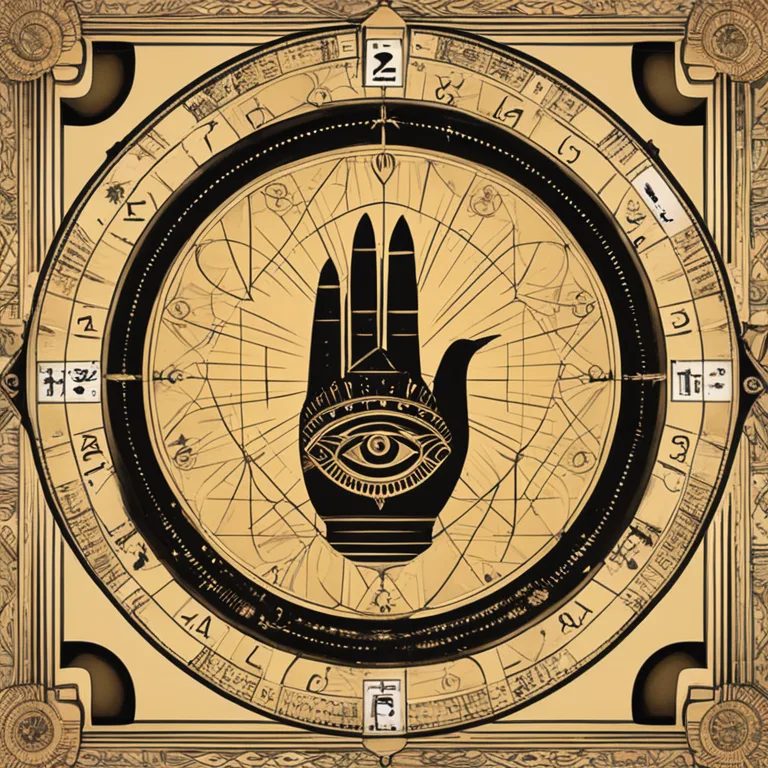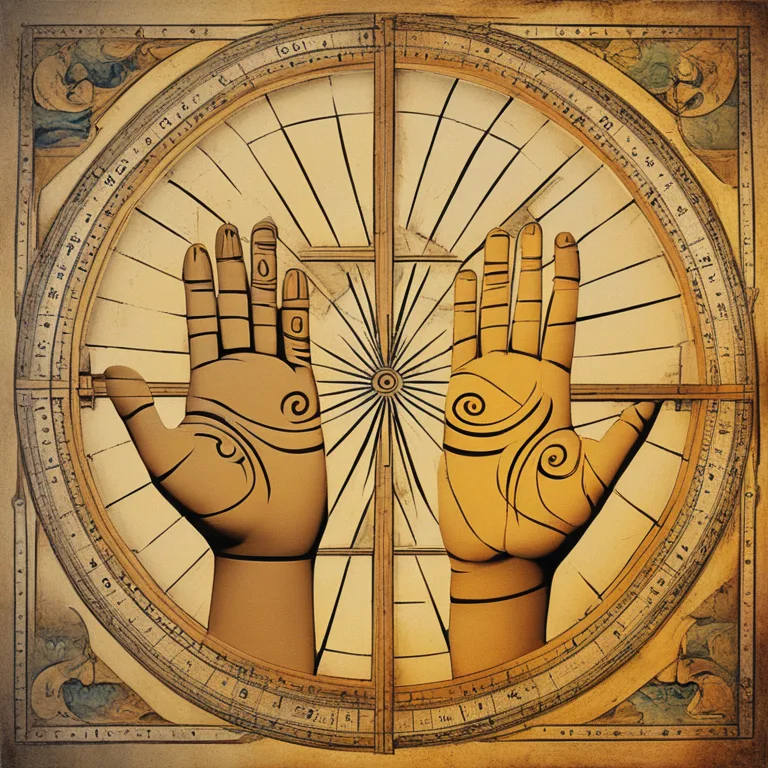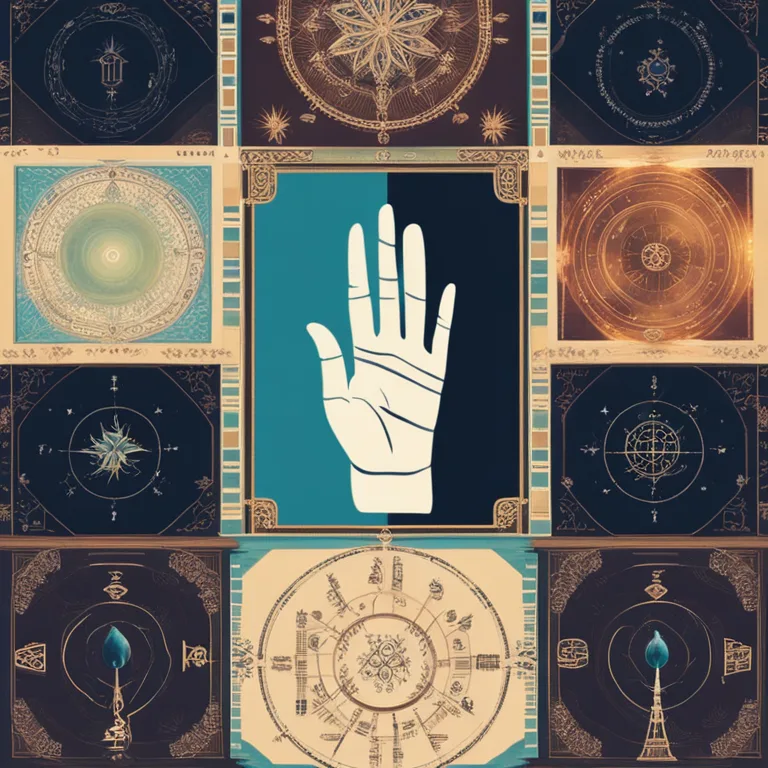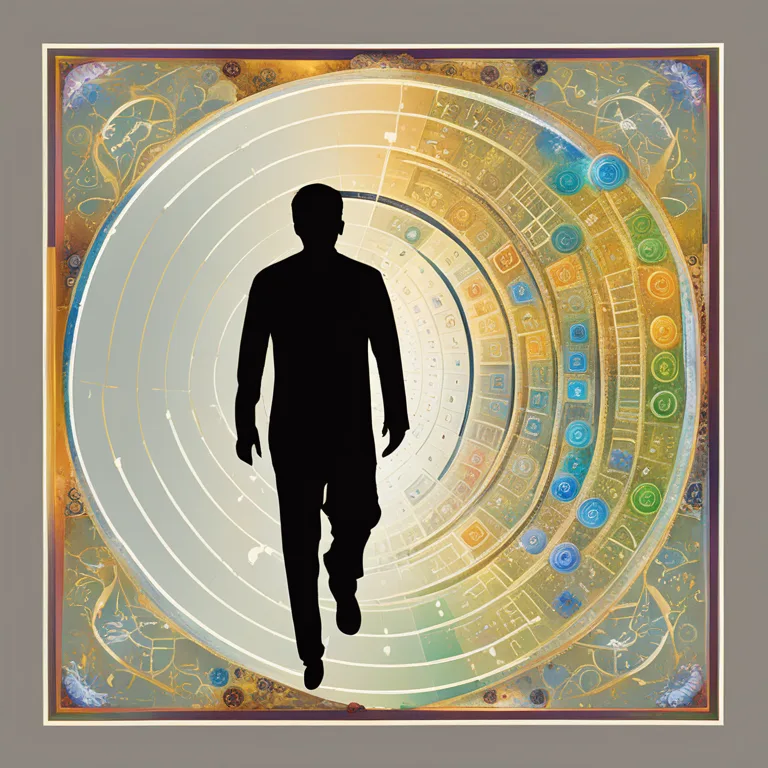
Intertwined Paths: Between Numerology & Palmistry
Examine how the ancient practices of numerology and palmistry parallel each other to offer insight into one's destiny and character.
article by Nora Pennington
Numerology and Palmistry: A Symbiotic Relationship
Numerology and palmistry, each with their own rich histories, have evolved independently, yet share a surprising symbiotic relationship. Palmistry, or chiromancy, involves the study of the palms to analyze personality traits and predict future occurrences, taking into account the shapes, lines, and structures present in the hand. Numerology, the mystical analysis of numbers, assigns numerical values to letters in names, birthdates, and other significant identifiers to derive meaningful insights. This article delves into how these two practices intertwine, complementing each other in providing a comprehensive metaphysical portrait of an individual.

Historical Roots and Present Relevance
The historical roots of numerology trace back to ancient civilizations, such as Babylon and Egypt, and were later refined by Greek philosophers like Pythagoras. Palmistry's origins are similarly aged, with evidence of its practice in ancient India, China, and Egypt. Today, both arts have adapted to the contemporary context, with numerology often embracing technology and digital analysis while palmistry remains a hands-on practice, but both are united in the quest for self-understanding and future planning. The year 2024 continues to see a resurgence of interest in these practices as people seek deeper meaning in an increasingly complex world.

Interpreting Life through Numerology
In numerology, the essence of an entity is captured by life path numbers, expression numbers, and soul urge numbers, among others. These numbers are derived from critical personal data, revealing an individual's purpose, talents, and motivations. Numerologists calculate these impactful digits which serve as a cosmic blueprint for one’s life journey. This calculation is not static; as names and circumstances change, so too may the related numbers, offering an evolving perspective in line with progressions in one's life.

Palmistry: Reading Destiny in Your Hands
Palmistry complements the data-driven approach of numerology with its physical and visual elements. A palmist examines specific lines such as the heart line, head line, and life line, alongside mounts, shapes, and even finger lengths, to read one's character traits, emotional tendencies, intellectual abilities, and potential life path. Each hand tells a story that may align with the narrative numerology provides, or offer a different facet, enhancing the overall comprehension of a person's destiny and choice patterns.

A Combined Approach to Personal Discovery
When combined, numerology and palmistry offer a fuller portrait of an individual's existence and possible future. Numerological data can validate the life trends indicated by palm readings, and conversely, the hands can exhibit markings or alterations that denote significant numerical changes in one's life, such as a shift in life path or expression numbers. Admirers of this unified approach often find that it provides a multidimensional understanding that either practice alone could not furnish.
The Future of Numerology and Palmistry
Looking ahead, numerology and palmistry are expected to undergo further fusion with technological advances, allowing for more intricate readings and personalized analyses. As algorithms grow smarter and biometric technology improves, the interplay between these two disciplines may become more sophisticated. Consequently, enthusiasts and professionals alike should stay abreast of developing trends and technologies that could revolutionize these ancient practices, ensuring their place in our collective future.
Published: 1/3/2024
Modified: 1/3/2024
More predictions
Come back here soon to learn more about yourself and your future


Accuracy in Divination: Palmistry vs. Astrology
Explore the relative accuracy of palmistry and astrology in predicting the future and revealing personal traits in this insightful comparison article.


Palm Lines and Love Connections
Delve into the fascinating world of palmistry and discover how your palms may hold the secrets to love and relationships.


The Origins & Journey of Palmistry
Trace the fascinating history of palmistry, understanding its ancient roots and its evolution through cultures and time.